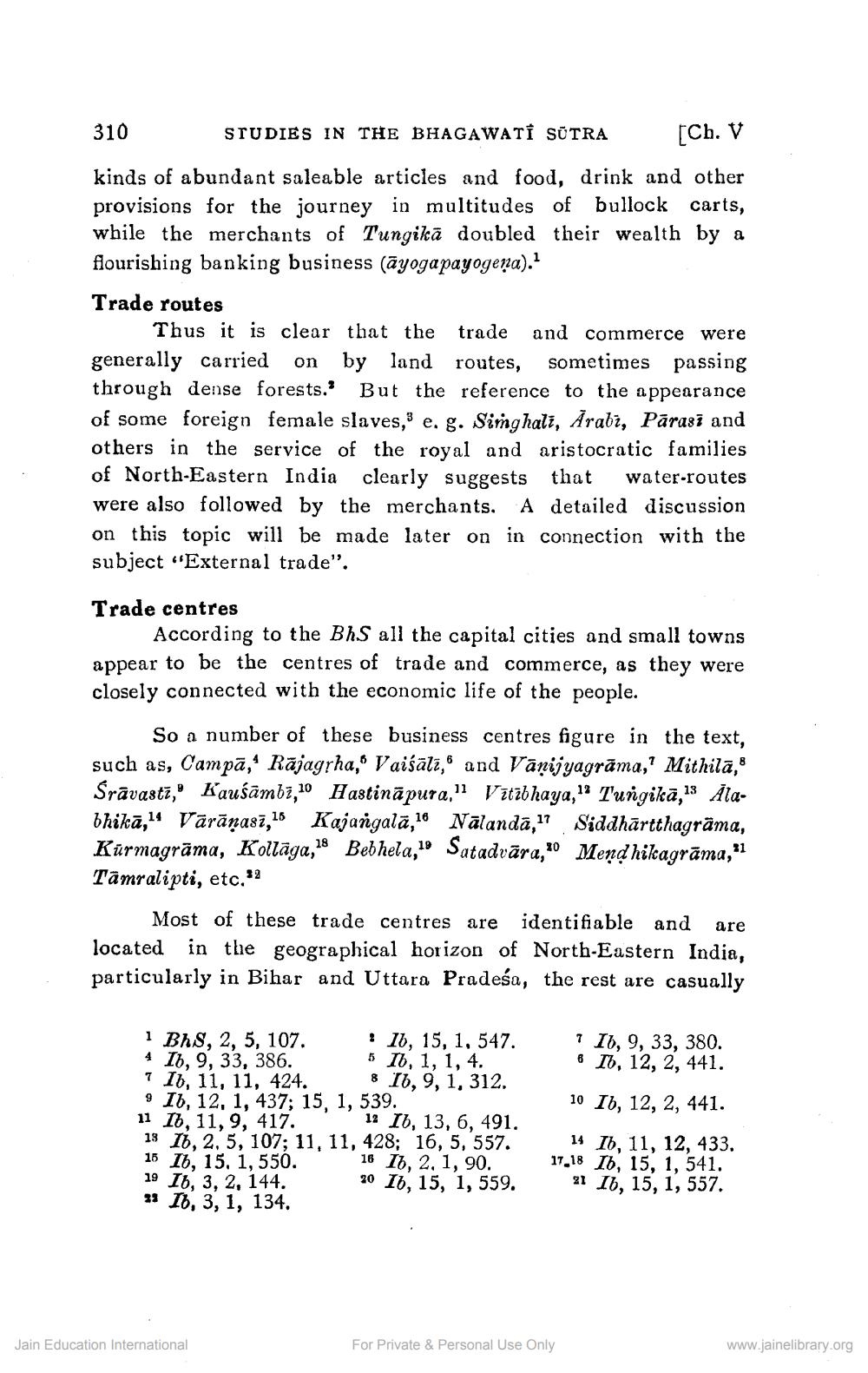________________
310
STUDIES IN THE BHAGAWATI SŪTRA
[Ch. V
kinds of abundant saleable articles and food, drink and other provisions for the journey in multitudes of bullock carts, while the merchants of Tungikā doubled their wealth by a flourishing banking business (āyogapayogena)." Trade routes
Thus it is clear that the trade and commerce were generally carried on by land routes, sometimes passing through dense forests. But the reference to the appearance of some foreign female slaves, e. g. Singhali, Arabi, Pārasi and others in the service of the royal and aristocratic families of North-Eastern India clearly suggests that water-routes were also followed by the merchants. A detailed discussion on this topic will be made later on in connection with the subject "External trade".
Trade centres
According to the Bhs all the capital cities and small towns appear to be the centres of trade and commerce, as they were closely connected with the economic life of the people.
So a number of these business centres figure in the text, such as, Campā, Rājagrha, Vaiśālī, and Vānijyagrāma,? Mithila, Srāvastī," Kaušāmb7,10 Hastināpura," Vītībhaya,"? Tungikā, 13 Ålabhikā," Vārāṇasī,16 Kajangalā, 16 Nālandā,? Siddhārtthagrāma, Kūrmagrāma, Kollāga, 28 Bebhela, 19 Satadvāra," Mendhikagrāma," Tāmralipti, etc."
Most of these trade centres are identifiable and are located in the geographical horizon of North-Eastern India, particularly in Bihar and Uttara Pradeśa, the rest are casually
i BhS, 2, 5, 107. 16, 15, 1, 547. 4 Ib, 9, 33, 386. 5 Ib, 1, 1, 4. ? Ib, 11, 11, 424. & 16, 9, 1, 312. 9 10, 12, 1, 437; 15, 1, 539. 11 10, 11, 9, 417. 12 1b, 13, 6, 491. 19 15, 2, 5, 107, 11, 11, 428; 16, 5, 557. 15 I6, 15, 1, 550. 16 16, 2, 1, 90. 19 16, 3, 2, 144. 20 I6, 15, 1, 559. 110, 3, 1, 134.
7 16, 9, 33, 380.
16, 12, 2, 441. 10 Ib, 12, 2, 441. 14 Ib, 11, 12, 433.
Ib, 15, 1, 541. 16, 15, 1, 557.
Jain Education International
For Private & Personal Use Only
www.jainelibrary.org




